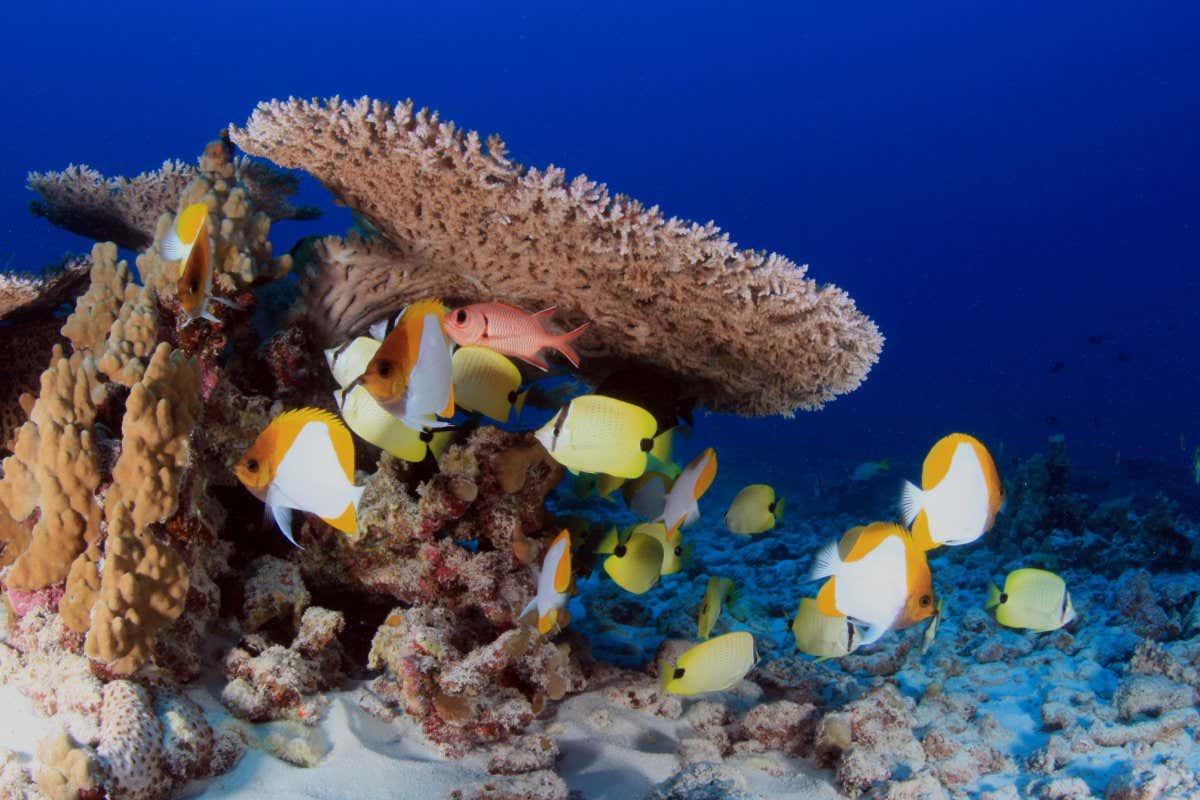[ad_1]
Logged forests in Borneo have more abundant birds and mammals than pristine forests, showing that conservationists should still try to protect these habitats
Environment
14 December 2022
A logged forest in Sarawak, Malaysia Yvan Cohen/LightRocket/Getty Images
Tropical forests degraded by logging may be far richer in animal and plant life than we thought.
Only around 30 per cent of the world’s tropical forests remain pristine. Most have been used for selective logging and are labelled “degraded”, though ecologists have been unsure precisely how timber extraction changes their ecosystems.
To address this, Yadvinder Malhi at the University of Oxford and his colleagues used tens of thousands of camera traps to estimate the population density of bird and mammal species in the highly biodiverse states of Sarawak and Sabah in Malaysia.
They then used the body mass of these animals to calculate the energy flow in both pristine and degraded forests, which reflects total energy consumption across the food chain. “You can think of energy flow as the measure of health or vitality of an ecosystem,” says Malhi.
They found that birds and mammals in logged forests consume 2.5 times the energy they consume in pristine forests. The total weight of the birds and mammals living in logged forests was 144 per cent and 231 per cent higher, respectively.
“We really weren’t expecting anywhere near this increase,” says Malhi. “This shows that these degraded forests that are often considered lost and get little attention are actually incredibly ecologically valuable.”
The boost in life didn’t result from generalist birds and mammals taking over the disturbed forest after specialist species were wiped out, which has occurred where Malaysian forests were converted into palm oil plantations.
Nearly all of the species found in the old-growth forests were also found in the disturbed forests and most had a higher population density.
“Degraded” tropical forests aren’t prioritised in conservation efforts as much as pristine jungles and it is easier for governments or companies to convert them into agriculture as they are assumed to be less ecologically valuable, says Malhi. “This study shows this is actually quite a dangerous idea, as many of these degraded forests are just as vibrant, or even more vibrant than old-growth forest.”
The researchers think that the plants in degraded forests are able to prioritise growth over security, focusing on competing for new light rather than producing toxins to fend off the herbivores that eat them.
The surge in plant life trickles down to the insects, various herbivores and eventually their predators. More light reaches the ground through the clearings in the forest canopy, which generates more food in the ground for deer, wild pigs or elephants. “The whole forest gets more edible and more tasty,” says Malhi.
Despite this, the findings don’t mean logged forests are superior. Due to the loss of many large trees, degraded forests have less biomass overall and absorb less carbon than pristine forests, so they aren’t as helpful in the fight against climate change. They are also likely to be worse at other key functions for maintaining the wider ecosystem, like generating rain.
However, Malhi says that the broad term “degraded” should be reconsidered, and that these vast swathes of resilient tropical forest must be better protected.
“In terms of much of the ecology, those logged forests are not lost. They’re holding vast amounts of ecology, biodiversity and ecological function,” he says.
Journal reference: Nature, DOI: 10.1038/s41586-022-05523-1
Sign up to Wild Wild Life, a free monthly newsletter celebrating the diversity and science of animals, plants and Earth’s other weird and wonderful inhabitants
More on these topics:
[ad_2]
Source link




